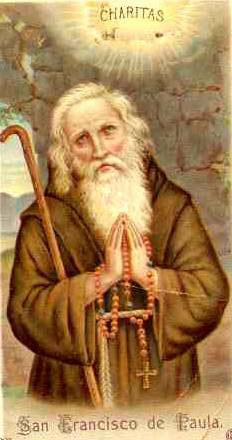We ask you, urgently: don't scroll past this
Dear readers, Catholic Online was de-platformed by Shopify for our pro-life beliefs. They shut down our Catholic Online, Catholic Online School, Prayer Candles, and Catholic Online Learning Resources essential faith tools serving over 1.4 million students and millions of families worldwide. Our founders, now in their 70's, just gave their entire life savings to protect this mission. But fewer than 2% of readers donate. If everyone gave just $5, the cost of a coffee, we could rebuild stronger and keep Catholic education free for all. Stand with us in faith. Thank you.Help Now >
Massa Candida
FREE Catholic Classes
Under the date 24 August, the "Martyrologium Romanum" records this commemoration:
At Carthage, of three hundred holy martyrs in the time of Valerian and Gallienus. Among other torments, the governor ordering a limekiln to be lighted and live coals with incense to be set near by, said to these confessors of the Faith : "Choose whether you will offer incense to Jupiter or be thrown down into lime." And they, armed with faith, confessing Christ, the Son of God, with one swift impulse hurled themselves into the fire, where in the fumes of the burning lime, they were reduced to a powder. Hence this band of blessed ones in white raiment have been held worthy of the name, White Mass .
The date of this event may be placed between A.D. 253, when Gallienus was associated with his father in the imperial office and A.D. 260 when Valerian was entrapped and made prisoner by Sapor, King of Persia. As to the exact place, St. Augustine [Ser. cccvi (al. cxii), 2] calls these martyrs the "White Mass of Utica", indicating that there they were specially commemorated. Utica was only 25 miles from the city of Carthage, which was the capital of a thickly populated district, and the three hundred may have been brought from Utica to be judged by the procurator (Galerius Maximus).
The fame of the Massa Candida has been perpetuated chiefly through two early references to them: that of St. Augustine, and that of the poet Prudentius. The latter, in the thirteenth hymn of his peri stephanon collection, has a dozen lines describing "the pit dug in the midst of the plain, filled nearly to the brim with lime that emitted choking vapours", how the "stones vomit fire, and the snowy dust burns." After telling how they faced this ordeal, he concludes: "Whiteness [ candor ] possesses their bodies; purity [ candor ] bears their minds [or, souls ] to heaven. Hence it [the "head-long swarm" to which the poet has referred in a preceding line] has merited to be forever called the Massa Candida ." Both St. Augustine and Prudentius were at the height of their activity before the end of the fourth century. Moreover, St. Augustine was a native and a resident of this same Province of Africa, while Prudentius was a Spaniards. It is natural to suppose that the glorious tale of the three hundred of Carthage had become familiar to both writers through a fresh and vivid tradition -- no older than the traditions of the Civil War now [1911] are in, say, the American South. It is not even probable that either of them originated the metaphor under which the martyrs of the limekiln have been known to later generation: the name Massa Candida had, most likely been long in use among the faithful of Africa and Spain. As Christians, they would have been reminded of Apocalypse 7:13-14, by every commemoration of a martyrdom ; as Romans -- at least in language and habit of thought -- they were aware that candidates ( candidati ) for office were said to have been so called in Republican Rome from the custom of whitening the toga with chalk or lime ( calx ) when canvassing for votes. Given the Apocalyptic image and the Latin etymology ( candor -- candidus -- candidatus ; cf. in the "Te Deum", "Candidatus martyrum exercitus"), it was almost inevitable that this united body of witnesses for Christ, together winning their heavenly white raiment in the incandescent lime, which reduced their bodies to a homogeneous mass, should, by the peculiar form of their agony, have suggested this name to the African and Spanish Christians.
(For the casuistry of the self-destruction of the Massa Candida, see SUICIDE.)
Join the Movement
When you sign up below, you don't just join an email list - you're joining an entire movement for Free world class Catholic education.

-

- Stations of the Cross
- Easter / Lent
- 5 Lenten Prayers
- Ash Wednesday
- Living Lent
- 7 Morning Prayers
- Mysteries of the Rosary
- Litany of the Bl. Virgin Mary
- Popular Saints
- Popular Prayers
- Female Saints
- Saint Feast Days by Month
- Pray the Rosary
Pope Francis’ April Prayer Intention: Using Technology to Strengthen Human Connections
Finding Peace Through Prayer in a World of Worry
Trump Administration Withholds Federal Grants from Planned Parenthood Over DEI and Civil Rights Concerns
Daily Catholic
 Daily Readings for Wednesday, April 02, 2025
Daily Readings for Wednesday, April 02, 2025 St. Francis of Paola: Saint of the Day for Wednesday, April 02, 2025
St. Francis of Paola: Saint of the Day for Wednesday, April 02, 2025 Prayer for God's Help in Daily Actions: Prayer of the Day for Friday, March 14, 2025
Prayer for God's Help in Daily Actions: Prayer of the Day for Friday, March 14, 2025 Daily Readings for Tuesday, April 01, 2025
Daily Readings for Tuesday, April 01, 2025 St. Hugh of Grenoble: Saint of the Day for Tuesday, April 01, 2025
St. Hugh of Grenoble: Saint of the Day for Tuesday, April 01, 2025- To Perceive Animals as God's Gifts: Prayer of the Day for Thursday, March 13, 2025
![]()
Copyright 2025 Catholic Online. All materials contained on this site, whether written, audible or visual are the exclusive property of Catholic Online and are protected under U.S. and International copyright laws, © Copyright 2025 Catholic Online. Any unauthorized use, without prior written consent of Catholic Online is strictly forbidden and prohibited.
Catholic Online is a Project of Your Catholic Voice Foundation, a Not-for-Profit Corporation. Your Catholic Voice Foundation has been granted a recognition of tax exemption under Section 501(c)(3) of the Internal Revenue Code. Federal Tax Identification Number: 81-0596847. Your gift is tax-deductible as allowed by law.


 Daily Readings for Wednesday, April 02, 2025
Daily Readings for Wednesday, April 02, 2025 St. Francis of Paola: Saint of the Day for Wednesday, April 02, 2025
St. Francis of Paola: Saint of the Day for Wednesday, April 02, 2025 Prayer for God's Help in Daily Actions: Prayer of the Day for Friday, March 14, 2025
Prayer for God's Help in Daily Actions: Prayer of the Day for Friday, March 14, 2025 St. Hugh of Grenoble: Saint of the Day for Tuesday, April 01, 2025
St. Hugh of Grenoble: Saint of the Day for Tuesday, April 01, 2025

